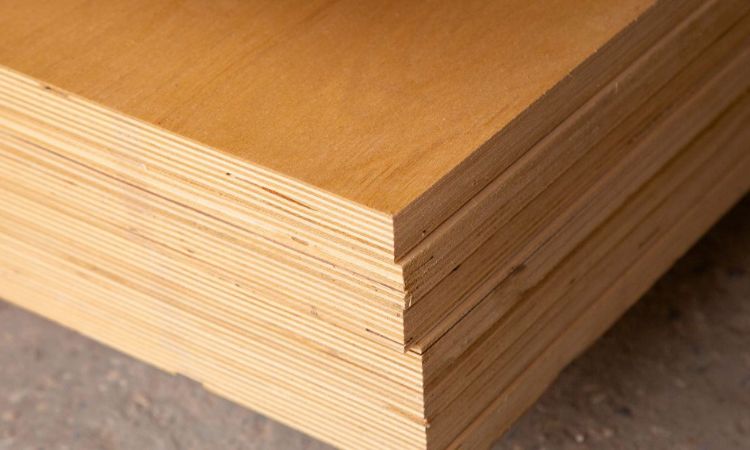
The global phenolic boards market size is expected to grow at a CAGR of 2.9% between 2024 and 2032. Major drivers of the market are growth in the construction industry and increased demand for sustainable materials. This article delves into the key benefits, industry developments, driving factors, COVID-19 impact, restraining factors, market segmentation, market outlook, trends, industry segmentation, regional analysis, key players, opportunities, challenges, restraints, and scope of the phenolic boards market.
Key Benefits of Phenolic Boards
- Durability: Phenolic boards are known for their exceptional strength and durability. They can withstand heavy loads and resist wear and tear, making them ideal for high-traffic areas.
- Fire Resistance: One of the most significant benefits of phenolic boards is their fire resistance. They do not contribute to fire spread and can withstand high temperatures, making them suitable for buildings requiring stringent fire safety standards.
- Water Resistance: Phenolic boards are highly resistant to moisture, making them ideal for use in humid environments or applications where water exposure is frequent.
- Chemical Resistance: These boards are resistant to a wide range of chemicals, which makes them suitable for use in laboratories and other environments where chemical exposure is a concern.
- Eco-Friendly: Phenolic boards are made from sustainable materials and are recyclable, contributing to environmental conservation efforts.
Key Industry Developments
- Innovative Products: Companies are focusing on developing innovative phenolic board products with enhanced properties such as increased strength, improved aesthetic appeal, and better sustainability.
- Strategic Partnerships: Major players in the market are forming strategic partnerships and collaborations to enhance their product portfolios and expand their market reach.
- Technological Advancements: Continuous advancements in manufacturing technologies are leading to the production of high-quality phenolic boards with superior properties.
Driving Factors
- Growth in the Construction Industry: The booming construction industry, particularly in emerging economies, is a major driver for the phenolic boards market. The demand for durable, fire-resistant, and moisture-resistant materials is fueling market growth.
- Sustainability Trends: Increasing awareness about environmental sustainability and the need for eco-friendly building materials are driving the demand for phenolic boards.
- Regulatory Support: Government regulations promoting the use of fire-resistant and sustainable materials in construction are positively impacting the market.
COVID-19 Impact
The COVID-19 pandemic had a mixed impact on the phenolic boards market. While construction activities were halted during lockdowns, leading to a temporary decline in demand, the subsequent recovery and emphasis on sustainable and safe building materials have boosted the market. The pandemic also highlighted the need for hygienic and resistant materials, which phenolic boards provide.
Restraining Factors
- High Cost: The high cost of phenolic boards compared to traditional materials is a significant restraining factor. This can limit their adoption, especially in cost-sensitive regions.
- Availability of Alternatives: The presence of alternative materials that offer similar benefits at lower costs poses a challenge to market growth.
Market Segmentation
The phenolic boards market can be segmented based on:
- Type: Standard Phenolic Boards, Fire-Resistant Phenolic Boards, Moisture-Resistant Phenolic Boards, etc.
- Application: Construction, Transportation, Industrial, Commercial, etc.
- End-User: Residential, Commercial, Industrial, Institutional, etc.
Market Outlook
The phenolic boards market is expected to witness steady growth over the forecast period. The demand for high-performance, sustainable building materials will continue to drive market expansion. Innovations in product development and increasing applications across various industries will further boost market prospects.
Market Overview and Trends
The market is characterized by continuous innovation and technological advancements. Key trends include the development of customized phenolic boards to meet specific industry requirements, increased focus on sustainability, and the adoption of advanced manufacturing processes.
Industry Segmentation
The industry can be segmented into various sectors such as construction, transportation, industrial, and commercial. The construction sector holds the largest market share due to the extensive use of phenolic boards in building applications.
Regional Analysis and Insights
- North America: The North American market is driven by stringent fire safety regulations and the demand for sustainable building materials.
- Europe: Europe is a significant market for phenolic boards due to the emphasis on green building practices and the presence of leading manufacturers.
- Asia-Pacific: The Asia-Pacific region is expected to witness the highest growth due to rapid urbanization, industrialization, and infrastructure development.
- Latin America: The market in Latin America is growing steadily, driven by increasing construction activities and the demand for durable materials.
- Middle East & Africa: The market in this region is growing due to the rise in construction projects and the need for fire-resistant materials.
Major Key Players
- Spigo Group
- Kingspan Group
- Asahi Kasei Corporation
- LX Hausys, Ltd.
- SAVI CO., LTD
- Changzhou Zhongtian Fireproof Decorative Sheets Co., Ltd.
- Yalong Wood Co., Ltd.
- UNILIN Insulation
- Fiberisin Industries
Opportunities
- Emerging Markets: Expanding into emerging markets with high construction growth offers significant opportunities for market players.
- Product Innovation: Developing innovative products with enhanced properties can help companies gain a competitive edge.
- Sustainability Initiatives: Leveraging sustainability trends and promoting eco-friendly phenolic boards can attract environmentally conscious consumers.
Challenges
- Cost Competitiveness: Balancing high production costs while maintaining competitive pricing is a major challenge.
- Market Penetration: Entering new markets and establishing a strong presence amidst competition requires significant investment and strategic planning.
Restraints
- Economic Fluctuations: Economic downturns can affect construction activities, thereby impacting the demand for phenolic boards.
- Regulatory Hurdles: Compliance with varying regulations across regions can pose challenges for market players.
Scope
The scope of the phenolic boards market extends across various industries and applications. Continuous innovation, strategic partnerships, and expanding market presence are crucial for sustained growth. The focus on sustainability and the development of high-performance phenolic boards will be key to capturing market opportunities.